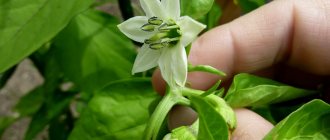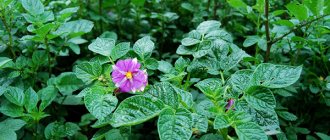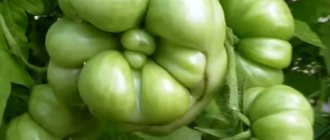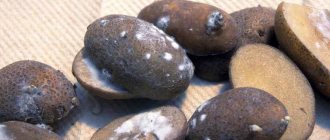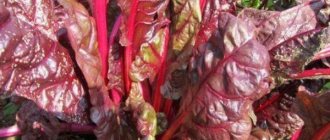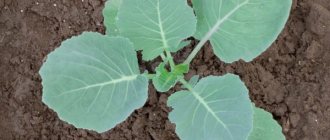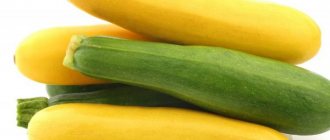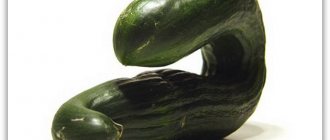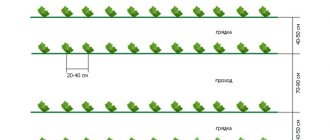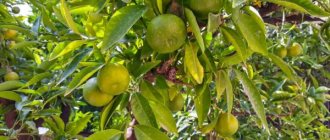How can you tell if raspberries are wilting?
The phenomenon of drying out leaves and stems is called dieback syndrome. Mostly young shoots are at risk. They are susceptible to cracking during the period of active growth. Because of this, larvae or fungal spores can easily get inside. Their activity contributes to the withering of the bush.
There are several signs of bush damage:
- yellowing and curling of leaves;
- reduction in foliage size;
- increased stretching of stems;
- deformation of the root system;
- absence of ovaries or partial drying of berries.
When planting seedlings, you should always pay attention to their condition. Healthy shoots are less susceptible to attack by parasites and diseases.
The berries are drying up
The berries on the affected bush do not turn red. Some of the grains acquire a white or gray tint. The fruits dry out before they ripen. This phenomenon is associated with exposure to direct sunlight and growing in low humidity conditions. Most often, plants that are not properly cared for are at risk.
The most common mistakes gardeners make include:
- irregular irrigation;
- watering during hot weather and moisture getting on the leaves;
- lack of minerals.
Raspberries need to be watered at the root - in the morning or evening. It is advisable to mulch the soil. This will retain moisture and nutrients longer.
The leaves are curling up
This is one of the signs of the appearance of aphids and the development of the disease - yellow mosaic. A certain period passes from the moment of infection. The disease appears only after the berries have ripened. Then the appearance of the leaves changes:
- they become covered with light spots;
- the tops of the leaves curl;
- the leaves become deformed and dry out.
Important! Affected areas must be torn off and burned. Then the disease will not spread further. And to combat parasites they use chemicals - “Iskra” or “Inta-Vir”.
Leaves turn yellow in spring or summer
During this period, wilting and yellowing of foliage is associated with the following phenomena:
- excess moisture;
- drought;
- micronutrient deficiency;
- development of chlorosis.
The raspberry tree can be revived. To do this, plants are fertilized with nitrogen preparations and diluted bird droppings. Potassium salt and superphosphate cannot be used during this period.
In hot weather, bushes are often irrigated with warm water. And with high humidity and frequent precipitation, it is better to refuse watering.
The stems are twisting
In conditions of high temperature and humidity or when the planting density is excessive, raspberries become a favorable environment for anthracnose pathogens. Then the stems become spotted and curl up.
To prevent the disease it is necessary:
- pull out weeds in a timely manner;
- thin out bushes;
- In spring, treat plants with 1% Bordeaux mixture.
Attention! Infected shoots cannot be treated. Affected stems are cut off and burned. After this, the land is treated with fungicides.
Dried greens along with berries
On raspberries, ovaries form only on annual stems. Old shoots gradually dry out and die. But sometimes young branches dry out along with the fruits. Then the raspberry tree needs thinning and abundant watering.
Plants also dry out when infected with fungi or viruses. Then they are treated with one of the drugs of your choice:
- fungicide "Oxyx";
- Bordeaux mixture;
- urea.
In case of severe damage by diseases or pests, the bushes are dug up and burned.
Raspberry seedlings turn yellow
After planting, the seedlings grew well, blossomed, and then suddenly began to turn yellow and dry out? In addition to the standard reasons, several new ones are added:
1. It is possible that the rhizomes were damaged or affected by a fungus during planting. They should always be carefully examined and treated with antiseptics.
2. In pursuit of nitrogen fertilizers, novice gardeners often forget to apply potassium on time. And it is also vital for young seedlings.
3. Poor land preparation leads to the same consequences. This is acidity, insufficient nutrition, too dense and not loosened soil.
4. In swampy areas or where groundwater is close, yellowing of raspberries is inevitable.
Why does the bush dry out? Main reasons
A dried plant may die. Sometimes you have to renew entire raspberry plantations. Deformation of the bush occurs under the influence of the following factors:
- Root cancer. It appears in the form of growths on the roots.
- Presence of parasites – stem gall midges or aphids.
- Purple spot disease.
- Dry soil.
- The raspberries did not have time to take root before the onset of winter. Then, during severe frosts, the root system is damaged.
Important! The choice of location for the raspberry plant is also important. In the shade, the bushes will feel uncomfortable and lack light. In this case, the foliage will begin to die.
Wrong climate
Plants will wilt and turn yellow under the following conditions:
- when water stagnates;
- with high or low humidity;
- with a lack of sunlight.
The bushes are growing rapidly. Moisture does not evaporate well. And dense thickets become a favorable environment for pathogenic microorganisms. Therefore, the raspberry tree needs to be thinned out periodically.
Interesting! Raspberries cannot be planted in lowlands. After heavy rains, the groundwater level may rise. Then the roots will begin to rot.
Lack of moisture
Shoot dieback syndrome usually occurs in hot weather. Stems and leaves begin to dry out from lack of water. Then the ovaries also remain without moisture and without nutrition.
You can fix the problem as follows:
- Moisten raspberries as the soil dries out.
- Water early in the morning or evening. In the heat, moisture quickly evaporates, and the roots do not have time to absorb it.
- Mulch the beds. Then the moisture is retained in the soil longer.
During severe drought, up to 80% of the crop can be lost.
Damage to the root system
Raspberry roots may be damaged in the following cases:
- from diseases;
- from cockchafer larvae;
- if the soil is loosened improperly;
- when the soil becomes waterlogged.
Then the plants cannot fully receive moisture from the ground. After this, nutritional deficiencies also occur. And if the root system is severely deformed, new shoots stop growing. The old branches begin to dry out and die.
Improper care
The raspberry root system is actively growing. At the same time, new stems are formed. Excess growth should be removed 1-2 times a year. Otherwise, the plants will dry out and turn yellow.
The most common mistakes in the care process also include:
- irregular watering;
- the presence of weeds in the garden;
- failure to comply with pruning deadlines;
- deficiency or excess of fertilizers.
The soil must be moist. But there should not be stagnation of water. If raspberries grow on sandy soil, they will more often need feeding. Minerals are washed out of sand faster.
Leaves turn yellow at the edges
When the yellowness spreads from the edges and the ends dry out first, the problem is most likely in the wrong conditions.
1. The bushes have become too thick and they are simply cramped. Remember to thin out the seedlings as needed to keep them healthy.
2. Raspberries lack light, which provides photosynthesis with the presence of green plant pigment. Do not plant berries in the shade or between other tall plants.
3. Raspberries are resistant to moisture deficiency, but severe drought is also dangerous for them. In hot weather, raspberries need to be watered generously, 3-4 buckets at a time, about 6-7 times a season.
4. If the water for irrigation was too cold, the plant simply freezes. Use liquid at least at room temperature.
5. If the yellow leaves soften and begin to rot, the problem may be an excess of moisture. Do not plant berries in areas that are too wet. When watering, make sure that the soil is not too wet and, moreover, that puddles do not stagnate. Do not forget about regular loosening of the soil and good drainage.
Diseases and how to treat them?
Improper care combined with an unfavorable microclimate makes bushes vulnerable to various diseases.
The following diseases pose a danger to raspberries:
- powdery mildew;
- anthracnose;
- canker spotting;
- gray rot.
Drying shoots must be removed and burned. The raspberry tree itself is treated with Nitrafen. This helps destroy insects that carry the infection. After this, the soil under the bushes is dug up. But at the same time you need to try not to damage the root system.
What causes raspberries to dry out?
All kinds of viruses are spread by insects in the form of cicadas and aphids.
Therefore, diseases that cause raspberries to dry out include:
- to viral chlorosis, which inhibits the development of the berry, it does not have time to become juicy and bright;
- yellow mosaic, in which the berry may not dry out completely, but will become dry and insipid;
- curl, also a virus, due to which the death of the bushes is inevitable.
All these troubles affect poor raspberry yields.
Pests - how to deal with them?
Fruit crops are very attractive to parasites. Most of them feed on the juice from the leaves. This causes the plant to turn yellow and die.
Raspberry pests include:
- glassware;
- aphid;
- gall midge;
- spider mite;
- nematodes;
- stem flies.
Important! To prevent parasites, raspberries are sprayed with garlic tincture 1-2 times a month. And when they invade, insecticides are used.
Why do the branches dry out?
This is a dying process, and many newly planted plants undergo this. As shrubs develop, their bark cracks and insects and their larvae, along with a phytopathogenic fungus, penetrate inside. It is because of them that the branches dry out.
When fungi appear, the stems may die after winter, already in early spring. If there is a lack of water, the death will accelerate. If the crop is overfertilized with the use of growth accelerators, it will not have time to harden, and the bark will quickly crack.
And then the raspberry bushes will become infected with the shoot gall midge, which easily penetrates the stems. She leaves larvae there, which require bark for nutrition.
Thus, the destruction of the protective layer - the periderm - occurs. Where there are a lot of larvae, ulcers form, which prevent the beneficial elements from spreading throughout all the bushes. Therefore, its upper parts die off. This is noticeable by shoots with purple or dark brown spots.
More on the topic: Raspberry pest control with folk remedies
What to do if the raspberries are missing?
If measures are not taken in time, the bushes may die. Further actions depend on the degree of damage to the raspberry tree:
- Death of 10-20% of shoots. The thickets need to be thinned out. After some time, new shoots will appear.
- Up to 50% of the bushes were damaged. It is enough to remove damaged shoots and eliminate the cause of their drying.
- Almost all the plants were gone. It is necessary to select healthy shoots and transplant them to a new location. It is better to dig up the old bed and treat the soil with Bordeaux mixture.
And if the root system is damaged, you will have to purchase new planting material.
First aid
At the first signs of wilting, you need to immediately take measures to save the bushes. To do this you need:
- carefully examine the shoots;
- cut damaged ones down to ground level;
- burn them;
- loosen the soil.
Next, the plants require proper care. Do not allow the soil to dry out or water to stagnate in the area.
Peculiarity! After eliminating the causes of yellowing, raspberries can be fed with complex fertilizers. Then she will recover faster.
How to treat the bush?
Raspberry processing is effective only in spring. At this time, insect activity is still low. In this case, the air temperature should not be higher than +12 degrees. To protect against parasites, shoots are sprayed with a 0.2% Chlorophos solution. After 2 weeks, the procedure is repeated.
During the formation of ovaries, insecticides are used:
- "Karate";
- "Confidor";
- "Calypso".
They treat the lower part of the stems.
The effect of soil on raspberries
Why raspberries turn yellow is determined by the composition of the soil. If it is not possible to conduct a laboratory analysis, then the appearance of the bushes will indicate a lack of nutrients in the soil. For raspberries, the presence of iron, magnesium, zinc, and boron in the soil is important. A lack of elements, as well as increased acidity or alkalization, causes yellowing (physiological chlorosis) and shredding of the leaves. This does not lead to the death of raspberries, but it reduces yield and worsens the taste and appearance of the berries. Applying fertilizers will help correct the situation. If there is a lack of iron, raspberries can be saved by adding ferrovit or iron chelate. Dolomite flour and magnesium sulfate will help prevent magnesium chlorosis.
If it was not possible to accurately determine the composition of the soil, raspberries can be fed with the following fertilizers:
If the soil is too alkaline, add potassium sulfate under the bushes. Sometimes in these cases, digging and loosening the soil between the raspberry bushes is enough. Acidic soil is deoxidized by adding chalk, lime, and wood ash.
Attentive attention and timely measures taken will help protect raspberry leaves from yellowing and drying out if they are non-infectious in nature. Infectious and viral causes of raspberry drying are much more dangerous.
Pests that cause drying out
What to do if raspberry branches with berries dry out due to pests? They usually attack flowers and leaves, but often affect other parts of the bush. Therefore, the protection of culture should be taken responsibly.
Spider mite
It is located on the underside of the leaves and sucks the juices out of the plant. The web first causes the leaves to dry out, and in case of serious damage, the branches also suffer. The mite manifests itself as small light spots, and then a white coating appears. At the first manifestations, colloidal sulfur or Karbofos should be used.
Raspberry beetle
The female individual of this insect lays up to fifty eggs per season. Already in June, the offspring begin to eat the bush. To prevent the beetle from appearing, you should dig up the garden in the fall, and use a product such as Guapsin in the summer.
Aphid
When the buds mature, the first generation of aphid larvae is born. When it attacks raspberries too much, its branches and leaves suffer. A characteristic manifestation is a sugary coating on the leaves. Folk remedies help get rid of the parasite. But they are not effective enough. Experts recommend resorting to powerful chemistry - for example, Kilzara.

